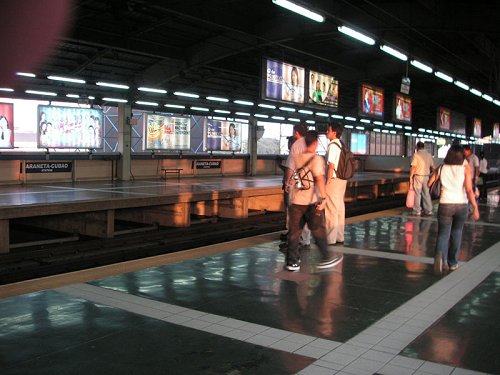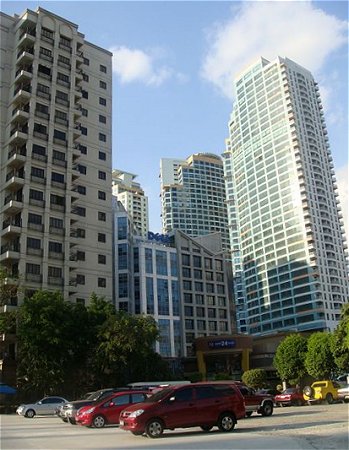 Araneta-Cubao MRT Station, Quezon City
Araneta-Cubao MRT Station, Quezon City http://commons.wikimedia.org/wiki/File:Araneta-Cubao_MRT.jpg
http://commons.wikimedia.org/wiki/File:Araneta-Cubao_MRT.jpg Mike Gonzalez
Mike Gonzalez
Quezon City is the biggest city in the Philippines. It is also one of the component cities that form Metro Manila. The city covers 166.2 sq km (64.2 sq mi) and has a population of 2.7 million people (2011 estimate).
Located at an average elevation of 17 m, it was incorporated on 12 October, 1939 from the former Diliman Estate. The Diliman name remains today as the center of Quezon City, and the location of many educational institutions. Quezon City was named after Manuel L. Quezon, who was the president of the Commonwealth of the Philippnes from 1935 until 1944. Quezon had developed the city to replace Manila as the country's capital.
 Eastwood, Quezon City
Eastwood, Quezon City http://commons.wikimedia.org/wiki/File:Eastwood_Quezon_City.JPG
http://commons.wikimedia.org/wiki/File:Eastwood_Quezon_City.JPG Zuanzuanfuwa
Zuanzuanfuwa
Quezon City served as the capital of the Philippines from 17 July, 1948. On 7 November, 1975, it become one of the 17 cities and municipalities of the newly established Metro Manila. Then on 24 June, 1976, President Marcos moved the capital back to Manila. On 31 March, 1978, the remains of President Manuel L. Quezon was transferred from Manila North Cemetery to the newly erected Quezon Memorial Monument on Quezon Elliptical Road.
On 22 February, 1986, the People Power Revolution took place on the section of Epifanio de los Santos Avenue (EDSA) which is within Quezon City.
Visiting Quezon City, Philippines
A number of highways and expressways link Quezon City with the rest of Metro Manila. The Epifanio de los Santos Avenue forms a semi-circle connecting Quezon City with Caloocan City to the west and Pasig City to the south. Quezon Avenue links it to Manila, via España Blvd, to the southwest.Places of Interest in Quezon City, Philippines
- Fiesta Carnival Complex
- La Loma Cockpit
- La Mesa Eco Park
- Museo ng Buhay Pilipino (Life of the Filipino Museum)
- Ninoy Aquino Parks and Wildlife
- Quezon Memorial Circle
- San Pedro Bautista
- Santo Domingo Church
Shopping in Quezon City
- Alimall
- Farmers Plaza
- Gateway Mall
- SM City North EDSA
- TriNoma
 Latest updates on Penang Travel Tips
Latest updates on Penang Travel Tips
 Map of Roads in Penang
Map of Roads in Penang
Looking for information on Penang? Use this Map of Roads in Penang to zoom in on information about Penang, brought to you road by road.
Copyright © 2003-2025 Timothy Tye. All Rights Reserved.

 Go Back
Go Back